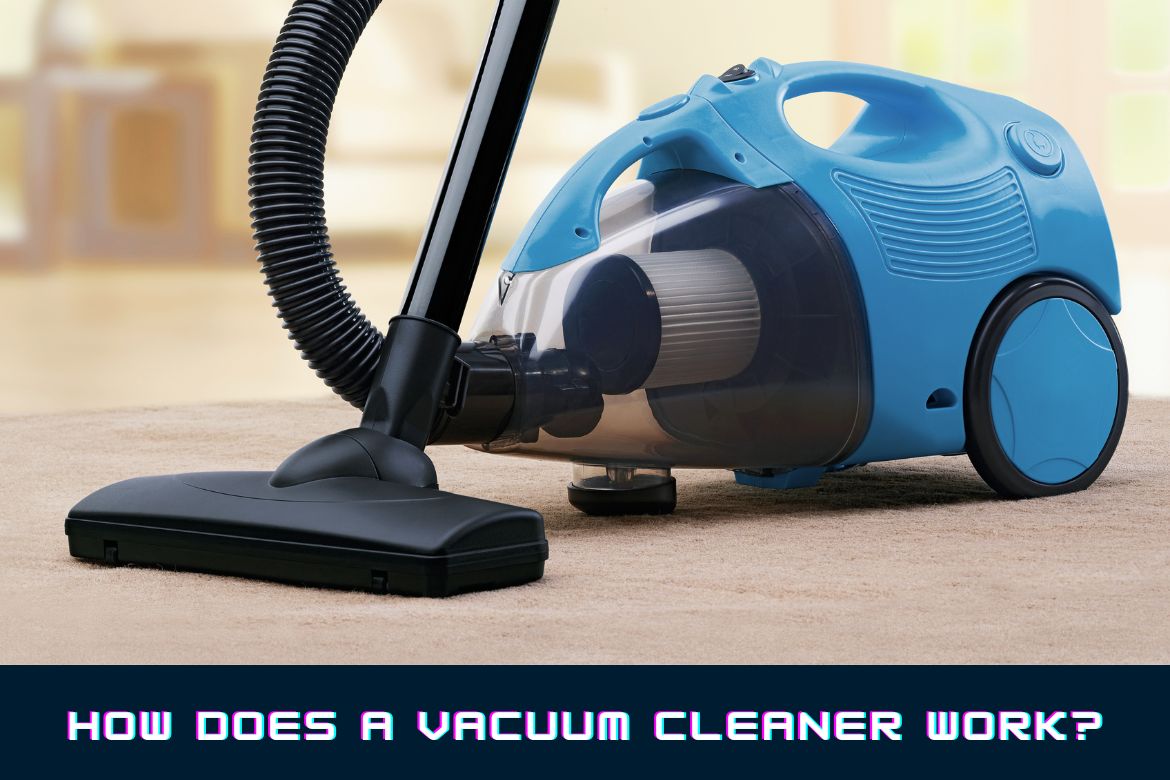Vacuum cleaners will become an indispensable part of modern households by 2023, revolutionising the way we keep our living spaces clean and dust-free. These remarkable machines have significantly simplified the tedious task of cleaning floors, carpets, and upholstery, saving us precious time and effort. In fact, according to a recent survey, approximately 97% of households in the United States own a vacuum cleaner, highlighting its widespread use and importance in our daily lives.
But have you ever wondered how a vacuum cleaner works? How do they effortlessly suck up dirt, dust, and debris from various surfaces, leaving our homes fresh and spotless? Can we use the vacuum cleaner every day? In this article, we will delve into the inner workings of a vacuum cleaner and explore the fascinating technology behind its functionality.
By gaining insight into the functioning of a vacuum cleaner, you will not only appreciate the engineering marvel behind its design but also learn how to effectively maintain and troubleshoot common issues that may arise. With this knowledge, you can maximise the performance and longevity of your vacuum cleaner, ensuring that it continues to serve you faithfully for years to come.
So, whether you’re a curious homeowner eager to learn about the technology that keeps your floors clean or a cleaning enthusiast interested in the science behind the suction, join us on this exploration of how a vacuum cleaner works, step by step. Let’s dive into the intricate world of cleaning machinery and discover the magic behind its exceptional cleaning capabilities.
Table of Contents
ToggleBasic Principles of Vacuum Cleaning
1. Definition of Vacuum Cleaning
2. How a Vacuum Cleaner Removes Dirt and Debris
Understanding how a vacuum cleaner works begins with the concept of suction. The vacuum cleaner’s main objective is to create a powerful airflow that pulls in dirt and debris. This is achieved through a combination of the cleaner’s electric motor, a fan or impeller, and a system of air passages.
When the vacuum cleaner is turned on, the electric motor powers the fan or impeller, which rapidly spins to generate high-speed airflow. As the air is forced through the passages, it creates a low-pressure zone inside the cleaner. This low-pressure environment causes the air outside the cleaner, along with the dirt and debris in its vicinity, to rush in to equalise the pressure. This is commonly known as suction.
The incoming air, dirt, and debris are then directed into a filtration system that separates the particles from the air. The filtered air is subsequently expelled through an exhaust too, usually located at the rear or top of the vacuum cleaner. The dirt and debris, on the other hand, are collected and stored in a bag or canister for later disposal.
3. Types of Vacuum Cleaners and Their Applications
- Upright vacuum cleaners: These are the most traditional and commonly used vacuum cleaners. They stand upright and feature a rotating brush at the base, making them ideal for cleaning carpets and larger floor areas. Upright vacuum cleaners often come with attachments for above-floor cleaning as well.
- Canister vacuum cleaners: Canister vacuum cleaners consist of a separate unit connected to a cleaning wand through a hose. They offer excellent manoeuvrability and are well-suited for cleaning stairs, upholstery, and hard-to-reach areas. Canister vacuums are available with a variety of attachments for versatile cleaning options.
- Handheld vacuum cleaners: Compact and lightweight, handheld vacuums are perfect for quick spot cleaning. They are especially useful for cleaning car interiors, furniture, and tight spaces. These vacuums are generally cordless and battery-powered for maximum portability.
- Robotic vacuum cleaners: Robotic vacuum cleaners have gained popularity in recent years for their convenience. These autonomous devices navigate around a room, using sensors to detect obstacles and efficiently clean floors as well. They are especially useful for daily maintenance cleaning and are a time-saving option.
Components of a Vacuum Cleaner
1. Power Source: The Electric Motor and Its Role
2. Suction System: Creating and Maintaining Suction Power
The suction system is responsible for generating and maintaining the vacuum cleaner’s suction power. It consists of the fan or impeller, which is mounted on the motor shaft too. As the motor spins the fan or impeller, it draws in air from the surrounding environment, creating a low-pressure zone within the cleaner. This low-pressure zone causes the air, along with the dirt and debris, to be pulled into the vacuum cleaner through the intake port.
To ensure optimal suction, the airflow is directed along a specific path within the vacuum cleaner. Air passages, tubes, and hoses are strategically designed to minimise resistance and maximise suction efficiency. By carefully channelling the airflow, vacuum cleaners can create a powerful suction that effectively lifts dirt and debris from surfaces.
3. Filtration System: Trapping Dust and Allergens
The filtration system is crucial in ensuring the efficient capture and containment of dust, allergens, and other microscopic particles by the vacuum cleaner over time. It comprises one or more filters that effectively remove these particles from the air, preventing them from being released back into the environment during operation. The filtration system greatly contributes to cleaner and healthier indoor air quality.
One commonly used filter type is the High-Efficiency Particulate Air (HEPA) filter, which can trap particles as small as 0.3 microns with a high degree of efficiency as well. HEPA filters are particularly beneficial for individuals with allergies or respiratory sensitivities as they help improve indoor air quality.
In addition to HEPA filters, some vacuum cleaners use cyclonic separation technology. This technique uses centrifugal force to separate dust and debris from the airflow, directing them into a collection container while the filtered air continues through the system.
4. Collection and Disposal Mechanisms: Bags, Canisters, and Their Functions
Vacuum cleaners employ different methods for collecting and storing the dirt and debris they pick up during cleaning. Two common mechanisms are bags and canisters.
Bag-based systems use disposable bags made of porous material that allows air to pass through while trapping the collected dirt and debris. The bag acts as an additional filtration layer too, preventing particles from escaping back into the air when the vacuum cleaner is turned off. Once the bag is full, it can be easily removed, sealed, and discarded.
On the other hand, bagless systems use transparent or semi-transparent canisters to collect dirt and debris. These canisters are often detachable, allowing users to empty them directly into the trash when they become full. Bagless systems offer the convenience of not having to purchase and replace bags but require periodic cleaning to maintain optimal performance.
Understanding the Suction Process
1. Airflow and Pressure Differentials
To comprehend how a vacuum cleaner works, it’s crucial to grasp the concepts of airflow and pressure differentials. When a vacuum cleaner is turned on, it creates a low-pressure zone within its system. This low-pressure zone, also known as a partial vacuum, results from the rapid movement of air caused by the electric motor.
In nature, air moves from areas of high pressure to areas of low pressure to equalise the pressure imbalance. The suction power of a vacuum cleaner capitalises on this principle. The vacuum cleaner’s motor creates a low-pressure zone, which prompts the nearby dirt and debris as well as the surrounding air to rush in to fill the space. This inflow of air, dirt, and debris occurs through the cleaner’s intake port.
2. Role of the Electric Motor in Generating Suction Power
3. Air Intake and Exhaust Mechanisms
Filtration Systems and Their Importance
1. Common Types of Filters
- HEPA Filters: HEPA filters have gained widespread recognition for their remarkable ability to filter air. Specifically engineered to capture particles as tiny as 0.3 microns with an impressive efficiency rate of 99.97%, these filters excel at removing allergens, pollen, pet dander, and fine dust particles. For individuals suffering from allergies or asthma, HEPA filters are an excellent choice to promote cleaner and healthier indoor air.
- Cyclonic Separation: Some vacuum cleaners employ cyclonic separation technology, which relies on centrifugal force to separate dust and debris from the airflow. As the airflow enters the cleaner, it is directed in a spiralling motion, causing heavier particles to be flung outward and collected in a separate container. The filtered air continues its journey through the cleaner, ensuring consistent suction power.
- Pre-Filters: Pre-filters are often used in conjunction with other filters to extend their lifespan and enhance filtration efficiency. These filters act as a first line of defence, capturing larger particles and preventing them from reaching the main filter. Pre-filters can be washable or replaceable, depending on the vacuum cleaner model.
2. Functions and Benefits of Effective Filtration
- Improved Indoor Air Quality: Vacuum cleaners equipped with top-notch filters, including HEPA filters, play a crucial role in eliminating airborne particles, allergens, and pollutants from the surrounding air too. These filters excel at capturing and trapping these microscopic particles, effectively improving indoor air quality. This leads to the creation of a healthier living environment, which is particularly beneficial for individuals with respiratory sensitivities or allergies.
- Dust and Allergen Control: Ensuring proper filtration is key to preventing the release of dust and allergens back into the air while vacuuming. This proactive measure significantly reduces the risk of allergies, respiratory irritation, and other health concerns that can be triggered by airborne particles. By effectively capturing and containing these particles, filtration systems play a vital role in maintaining a cleaner and healthier indoor environment.
- Protection of Vacuum Cleaner Components: Effective filtration systems play a vital role in safeguarding the internal components of the vacuum cleaner. By capturing dirt and debris, filters prevent them from entering and potentially damaging the motor or other sensitive parts as well.
3. Maintenance and Cleaning of Filters
- Check the manufacturer’s instructions: Refer to the vacuum cleaner’s manual for specific guidelines on filter maintenance and cleaning. Manufacturers often provide recommendations tailored to their products.
- Washable Filters: If your vacuum cleaner has washable filters, it’s important to clean them regularly according to the manufacturer’s instructions. Typically, these filters can be rinsed under water, allowed to dry thoroughly, and then reinstalled.
- Replaceable Filters: It is important to regularly monitor the condition of filters that require replacement. By following the manufacturer’s recommended replacement schedule, you can ensure that the filtration system continues to operate effectively. This proactive approach guarantees that your vacuum cleaner maintains optimal filtration performance, leading to cleaner air and more efficient cleaning results.
- Cleaning Attachments: It’s important to keep the cleaning attachments, such as brushes and nozzles, clean as well. Remove any trapped debris or hair to prevent clogging and maintain optimal suction.
Remember, clean filters promote efficient airflow and suction, allowing your vacuum cleaner to work effectively in capturing dirt and maintaining cleanliness in your home.

